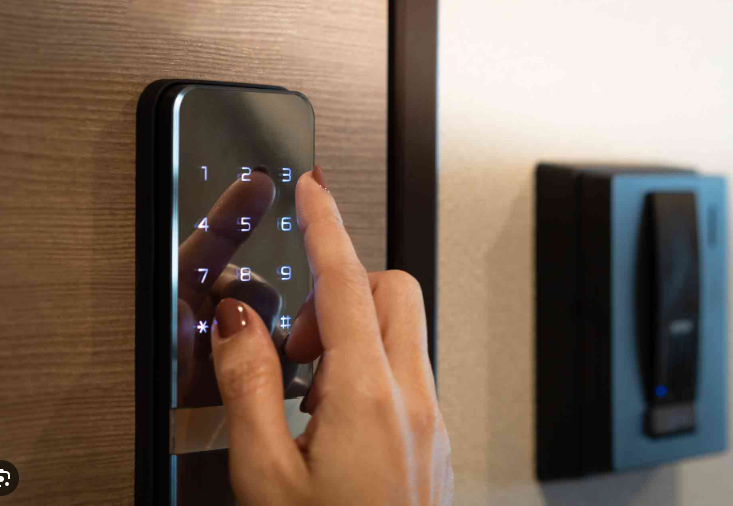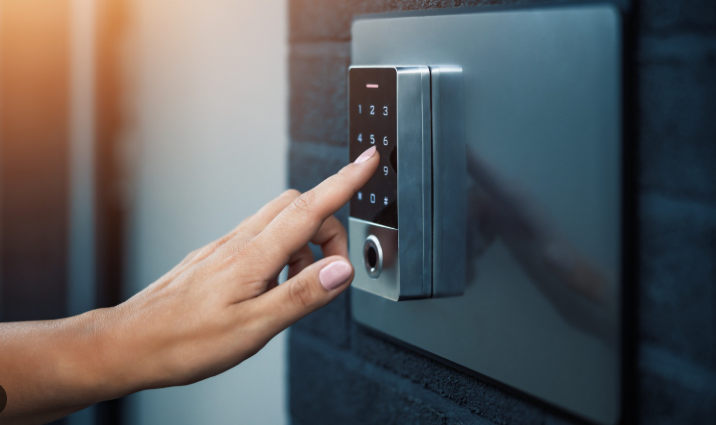When your smart lock stops working, it can be frustrating, especially if you rely on it for keyless entry and home security. Whether it’s a connectivity issue, a dead battery, or a mechanical problem, knowing what to do if your smart lock stops working is crucial for restoring functionality and maintaining smart lock safety. In this comprehensive guide, we’ll explore common reasons why a smart lock may fail, step-by-step smart lock troubleshooting tips, and best practices for smart lock installation, setup, and maintenance to prevent future issues. By the end, you’ll have the knowledge to diagnose and fix your smart lock or know when to seek professional help.
Why Do Smart Locks Stop Working?
Smart locks are advanced devices that combine mechanical components with technologies like Wi-Fi, Bluetooth, or Z-Wave. When a smart lock stops working, the issue could stem from various factors, including power, connectivity, software, or hardware problems. Understanding the potential causes is the first step in effective smart lock troubleshooting. Common reasons include:
- Dead or Low Batteries: Smart locks rely on batteries, and a depleted battery is the most common reason for failure.
- Connectivity Issues: Problems with Wi-Fi, Bluetooth, or Z-Wave/Zigbee connections can prevent the lock from responding to app or voice commands.
- Software Glitches: Outdated firmware or app issues can cause the lock to malfunction.
- Mechanical Problems: Misaligned components or physical wear can affect the lock’s operation.
- Improper Installation: Incorrect smart lock installation can lead to operational issues.
- Environmental Factors: Extreme weather or debris can impact the lock’s performance.
Let’s dive into what to do if your smart lock stops working, with actionable steps to diagnose and resolve the issue.

Step-by-Step Guide: What to Do If Your Smart Lock Stops Working
When your smart lock stops working, follow these smart lock troubleshooting steps to identify and fix the problem. These steps are designed to address common issues and restore functionality.
1. Check the Smart Lock Battery Life
The most frequent cause of a smart lock stopping is a dead or low battery. Most smart locks have a smart lock battery life of 6–12 months, depending on usage and connectivity (Wi-Fi locks drain batteries faster). Here’s what to do:
- Check for Low-Battery Alerts: Many smart locks send notifications via their app when the battery is low. If you missed these alerts, check the app for battery status.
- Replace the Batteries: Use the recommended battery type (usually AA or AAA) and replace all batteries, even if only one appears dead. Ensure proper polarity when inserting them.
- Test the Lock: After replacing the batteries, test the lock using the keypad, app, or physical key (if available).
- Use a Backup Power Option: Some smart locks have a backup power feature, such as a 9V battery terminal or USB port, to temporarily power the lock. Check your lock’s manual for details.
Tip: To prevent future issues, monitor smart lock battery life regularly and replace batteries every 6–9 months as part of smart lock maintenance.
2. Verify Connectivity
If your smart lock isn’t responding to app or voice commands, connectivity issues may be the culprit. Here’s how to troubleshoot:
- Wi-Fi Locks: Ensure your Wi-Fi network is active and the lock is within range of your router. Restart your router and check for signal interference from other devices. Re-connect your smart lock to the Wi-Fi network via the app.
- Bluetooth Locks: Ensure your smartphone is within Bluetooth range (typically 30–100 feet) and Bluetooth is enabled. Re-pair the lock by following the manufacturer’s instructions for how to pair a smart lock.
- Z-Wave/Zigbee Locks: Check that the smart home hub is powered on and connected to your network. Ensure the lock is within the hub’s range (usually 30–100 feet, depending on the hub).
- Reset the Connection: If connectivity persists, reset the lock’s network settings and re-connect your smart lock to the app or hub.
Tip: Use a secure Wi-Fi network with WPA3 encryption to enhance smart lock safety and prevent connectivity disruptions.
3. Test the Lock’s Functionality
If the batteries and connectivity are fine, test the lock’s basic functions to identify the issue:
- Keypad or App: Try locking/unlocking using the keypad, app, or voice commands (if integrated with a smart assistant like Alexa). If one method works but another doesn’t, the issue may be specific to that input.
- Physical Key: Most smart locks include a physical key as a backup. Test it to see if the mechanical components are functioning.
- Auto-Lock/Geofencing: If the auto-lock or geofencing features aren’t working, check the app settings to ensure they’re enabled.
Tip: If the lock responds to some methods but not others, the issue may be software-related or specific to the app or hub.
4. Update Firmware and App
Software glitches can cause a smart lock to stop working. Ensure both the lock’s firmware and its companion app are up to date:
- Check for Firmware Updates: Open the lock’s app and look for a firmware update option. Follow the instructions to install the latest version, which can fix bugs and improve performance.
- Update the App: Ensure the lock’s app is updated to the latest version via your device’s app store.
- Reboot the Lock: Some locks allow a soft reset (e.g., removing and reinserting batteries) to refresh the system without erasing settings.
Tip: Regular firmware updates are a key part of smart lock maintenance to address vulnerabilities and ensure smooth operation.
5. Inspect for Mechanical or Installation Issues
If the lock still doesn’t work, the issue may be mechanical or related to improper smart lock installation. Here’s what to check:
- Alignment: Ensure the lock’s bolt aligns properly with the door’s strike plate. Misalignment can prevent the lock from engaging or disengaging.
- Physical Obstructions: Check for debris, dirt, or damage in the lock mechanism or door frame. Clean the lock as part of smart lock maintenance.
- Door Condition: Warped or misaligned doors can affect the lock’s operation. Adjust the door or hinges if necessary.
- Reinstall if Needed: If you suspect improper installation, refer to the manufacturer’s smart lock installation guide and reinstall the lock, ensuring all components are secure.
Tip: If you’re unsure about installation, consult a professional to ensure the lock is properly fitted.
6. Reset the Smart Lock
If the above steps don’t resolve the issue, perform a factory reset to restore the lock to its default settings:
- Locate Reset Instructions: Check the lock’s manual or manufacturer’s website for reset instructions, as the process varies by model.
- Perform the Reset: This typically involves pressing a reset button or entering a specific code. Note that a reset will erase all settings, including user codes and app pairings.
- Reconfigure the Lock: After resetting, follow the smart lock setup process to re-connect your smart lock to your app, Wi-Fi, or hub.
Tip: Save a backup of your lock’s settings (e.g., user codes) in the app before resetting to simplify reconfiguration.
7. Contact Manufacturer Support or a Professional
If none of the above steps work, the issue may be a hardware failure or a complex software problem. Here’s what to do:
- Check the Warranty: Most smart locks come with a 1–2-year warranty. Contact the manufacturer for support or replacement options.
- Consult the Manufacturer’s Resources: Visit the manufacturer’s website or app for detailed smart lock troubleshooting guides or customer support contact information.
- Hire a Professional: A locksmith or smart home technician can diagnose and fix hardware issues or complex installation problems.
Tip: Keep your lock’s manual and purchase details handy for quick reference when contacting support.

Preventing Future Smart Lock Issues
To avoid future problems and ensure your smart lock remains reliable, follow these smart lock tips for ongoing maintenance and security:
1. Monitor Smart Lock Battery Life
Check the battery level every 3–6 months and replace batteries before they run out. Most apps provide low-battery alerts, but proactive monitoring prevents lockouts. Use high-quality batteries recommended by the manufacturer to maximize smart lock battery life.
2. Perform Regular Smart Lock Maintenance
Incorporate smart lock maintenance into your routine:
- Update firmware regularly to patch security vulnerabilities and improve performance.
- Clean the lock and keypad to remove dirt or debris that could affect operation.
- Test the lock’s mechanical components periodically to ensure smooth operation.
3. Secure Your Smart Lock Setup
A secure smart lock setup prevents connectivity and security issues:
- Use a strong, unique password for the lock’s app and associated accounts.
- Enable two-factor authentication (2FA) if available.
- Connect your smart lock to a secure Wi-Fi network with WPA3 encryption.
- Follow the manufacturer’s instructions for how to pair a smart lock to ensure secure connections.
4. Choose the Right Smart Lock
Invest in a high-quality smart lock from a reputable brand with strong encryption, reliable connectivity, and positive reviews. A comprehensive best smart lock guide can help you select a model that suits your needs and minimizes issues.
5. Consider a Portable Smart Lock for Temporary Use
For renters or travelers, a portable smart lock is a great option. These locks are easy to install and remove without altering the door, reducing the risk of installation-related issues. Ensure the portable lock has reliable battery life and secure connectivity.
Special Considerations for Different Scenarios
The approach to fixing a smart lock that stops working may vary depending on your use case:
- Homeowners: Focus on thorough smart lock installation and regular maintenance to prevent issues with permanent setups.
- Renters: A portable smart lock can simplify troubleshooting, as it’s easy to reinstall or replace without damaging the door.
- Vacation Rentals: Ensure reliable Wi-Fi and regular battery checks to avoid disruptions for guests.
- Businesses: Commercial-grade smart locks may require professional maintenance to ensure consistent performance for multiple users.
Common Myths About Smart Lock Failures
Several misconceptions about smart lock failures can cause unnecessary worry. Let’s debunk a few:
- Myth: Smart locks always fail when batteries die. Most smart locks include a physical key or backup power option to ensure access.
- Myth: Smart locks are unreliable. With proper smart lock installation and maintenance, high-quality locks are highly reliable.
- Myth: Fixing a smart lock is complicated. Many issues can be resolved with simple smart lock troubleshooting steps, like replacing batteries or resetting the lock.
Conclusion: What to Do If Your Smart Lock Stops Working
If your smart lock stops working, don’t panic—most issues can be resolved with systematic smart lock troubleshooting. Start by checking the smart lock battery life, verifying connectivity, testing functionality, and updating firmware. If mechanical or installation issues are suspected, inspect the lock and door alignment or reinstall as needed. For persistent problems, contact the manufacturer or a professional for support. By following smart lock tips for smart lock installation, smart lock setup, and smart lock maintenance, you can prevent future issues and ensure your lock remains secure and reliable.
For more guidance on choosing and maintaining a smart lock, explore this comprehensive home security tips guide to find the best model for your needs and keep it running smoothly.